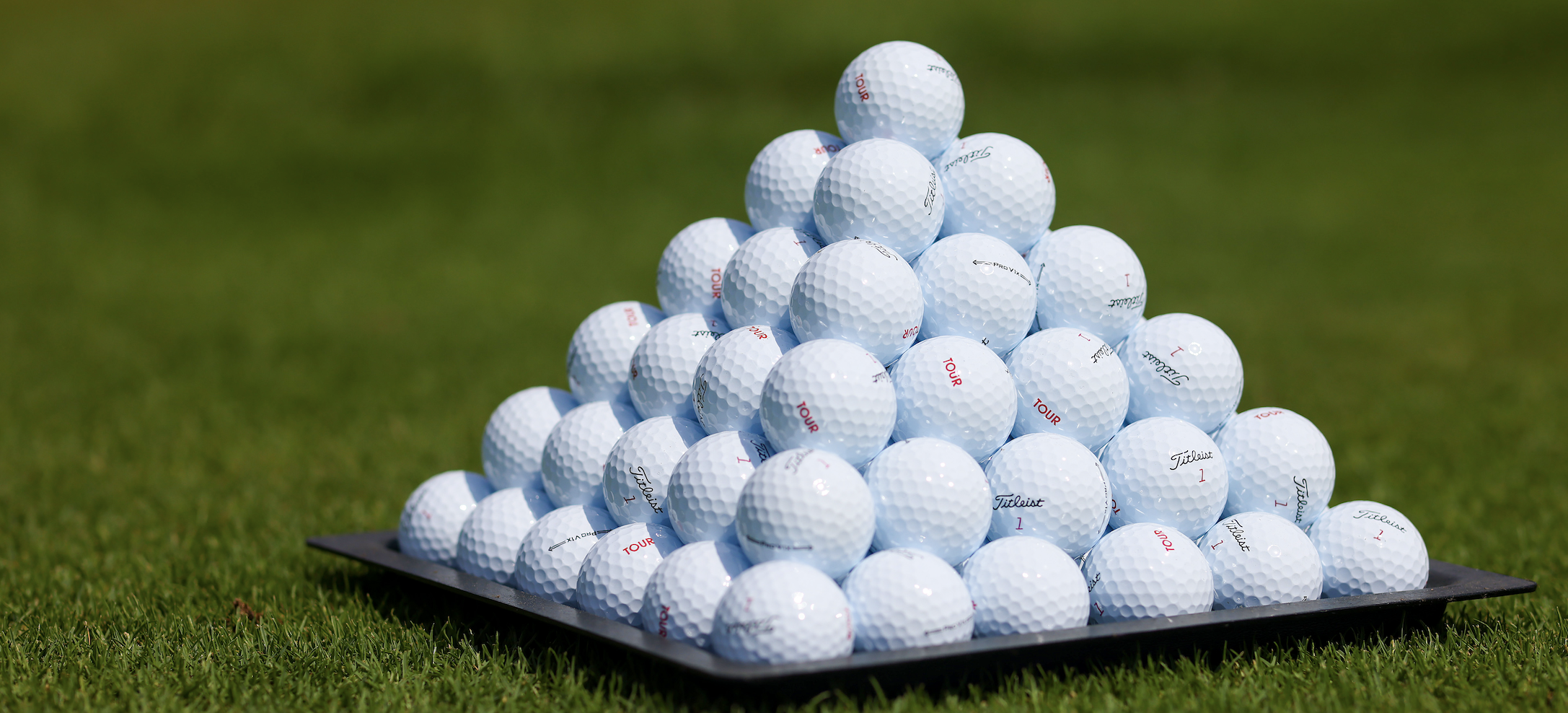
The R&A and USGA have announced that the golf ball will be rolled back for professional, elite amateur and recreational players to "reduce the impact increased hitting distances have on golf's long-term sustainability".
Pros will use the new balls in 2028, while recreational players won't have to start using them until 2030.
The new balls are expected to see a reduction in distance of 13-15 yards for the longest hitters, 9-11 yards for the average touring pro and 5-7 yards for an average female pro.
Recreational golfers are set to lose "5 yards or less" according to the governing bodies, who say that impact on regular golfers will be "kept to an absolute minimum." The 5 yards or less figure is based on a swing speed of 93mph for males and 72mph for females, so presumably those with faster swings will see a bigger loss in distance and slower swingers will see less distance lost.
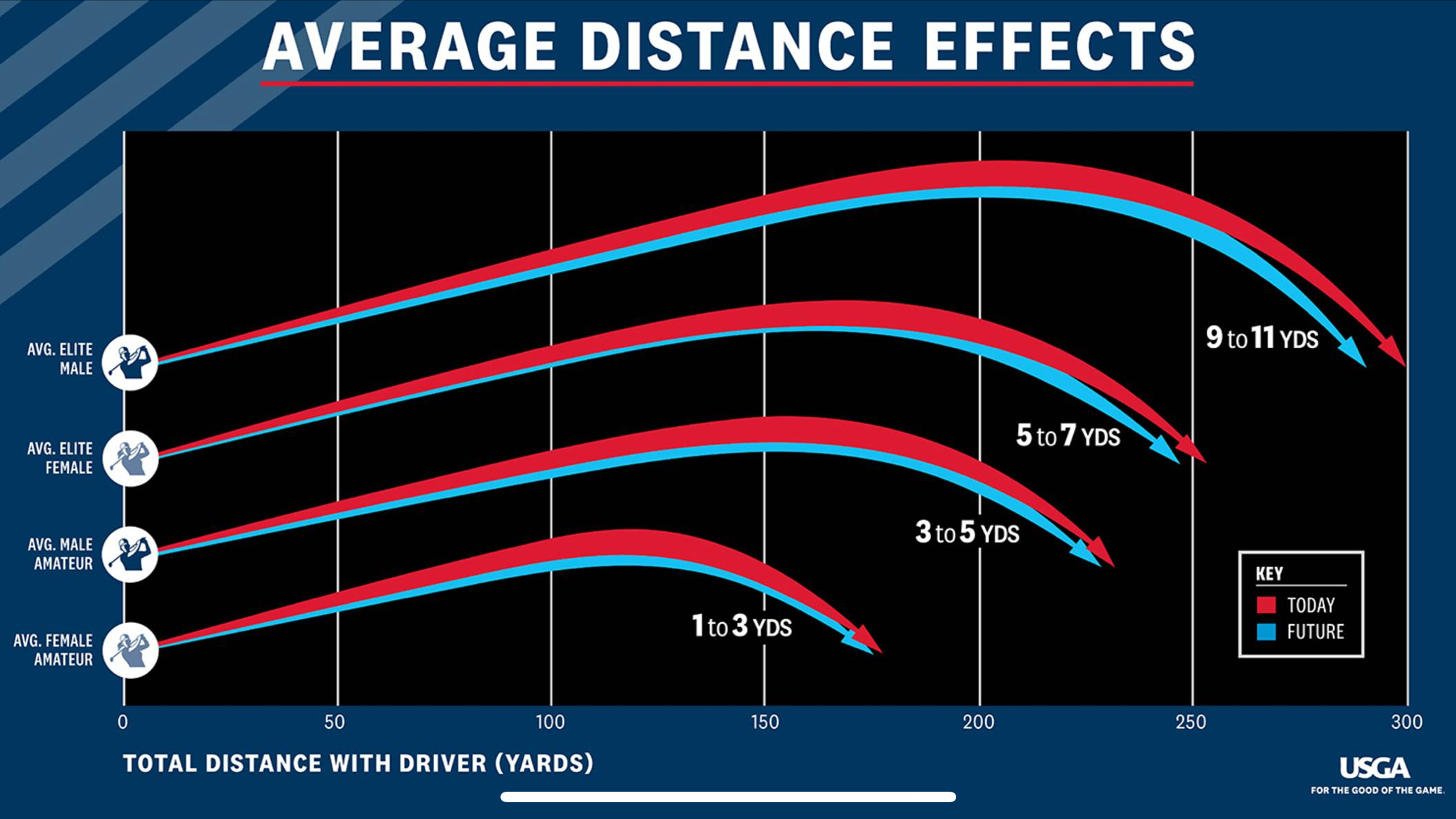
The golf ball will be rolled back by changing the testing procedures. Currently golf balls in testing cannot travel more than 317 yards (plus a 3 yard tolerance) with a testing swing speed of 120mph, a spin rate of 2520rpm and a launch angle of 10 degrees. The overall distance will remain the same for testing from 2028 onwards but the swing speed will be upped to 125mph with a lower spin rate of 2220rpm and a higher launch angle of 11 degrees.
While the testing procedures will be changed in 2028, golf balls released in 2027 and earlier will still be allowed in play until January 2030 to allow golfers, manufacturers and retailers time to adjust, the governing bodies say.
The news means that 'bifurcation' in golf will not be going ahead as previously planned, where pros and recreational golfers use different equipment. The PGA Tour and manufacturers were against the plans for change.
Martin Slumbers, R&A CEO, said: "We are convinced that this decision is one of the key ways of achieving a sustainable future for golf, protecting the integrity of the game and meeting out environmental responsibilities. The measure we are taking has been carefully considered and calibrated while maintaining the 'one game' ethos deemed to be so important to the golf industry. Importantly, it also keeps the impact on recreational golfers to an absolute minimum. We are acting now because we want to ensure that future generations can enjoy the unique challenge of golf as much as we do."
Mike Whan, USGA CEO, said: "Governance is hard. And while thousands will claim that we did too much, there will be just as many who said we didn't do enough to protect the game long-term. But from the beginning, we've been driven to do what is right for the game, without bias. As we've said, doing nothing is not an option - and we would be failing in our responsibility to protect the game's future if we didn't take appropriate action now."
Updates from:
A BIG DAY FOR GOLF
Huge news today confirmed after days of speculation - the golf ball is being rolled back across the entire game. We'll have updates and reaction throughout the day.
WHY IS THIS HAPPENING?
A rollback has been spoken about for years, and there's a number of reasons why it's happening.
The main one is due to sustainability, where longer hitting meant longer golf courses were necessary - meaning more water, more resources, more equipment, more staff and more money to maintain.
There's also a design element, too, where the world's best players were no longer playing the courses in the way they were originally designed to be played. That has also required more costs as bunkers have had to be moved and holes re-designed.
The R&A say:
"The R&A and the USGA are guided by an overarching principle to continue to preserve the fundamental elements of golf – protecting the integrity of golf courses, including their overall length, and ensuring that a variety of skills are needed to be successful. Longer golf courses require additional resources such as water, the cost of renovating or moving elements like tees and bunkers continues to rise and other long-term impacts have been identified as a result of increased distance. The governing bodies believe that if the sport is to enjoy a sustainable long-term future then these economic and environmental impacts have to be kept under control."
MANUFACTURER REACTION:
Here's the reaction of David Abeles, TaylorMade CEO:
"As a brand that prioritizes improving product performance for golfers of all skill levels, the decision to proceed with the golf ball rollback is disappointing. While appreciative of the opportunity to have a seat at the table and a voice in the debate, we feel like the rollback is simply disconnected from what golfers believe is best for the game. Throughout the decision-making process, the USGA provided a platform to express our views, provide new data sources, and engage in candid discussions. In the spirit of collaboration, we acknowledge and respect the rules that form an integral part of our game’s fabric, even when we disagree with them. Looking ahead, as the new golf ball standards come into effect in 2028 for professional golfers and 2030 for amateurs, we assure everyone, at every level of our game, that we will be well-prepared to navigate these changes. Our commitment to innovation remains unwavering. As with every product we make, we will work tirelessly to find alternative pathways to make them better and we will continually push the performance boundaries within the parameters set by the rules."
PGA TOUR REACTION TO GOLF BALL ROLLBACK:
OUR DEPUTY EDITOR'S THOUGHTS:
I understand why they have gone down this route. I like how progressive it is in that the players who hit the ball furthest, and are causing the biggest ‘problems’ with golf course sustainability, will be affected the most versus recreational players that will likely only losing a few yards.
But I can’t help but feel other options on the table may have been less disruptive and achieved the same goal - reducing tee heights, letting fairway grasses grow longer, reducing MOI limits on drivers - to name but a few.
- Joel Tadman
HOW MUCH DISTANCE WILL I LOSE?
An interesting graphic from the USGA:
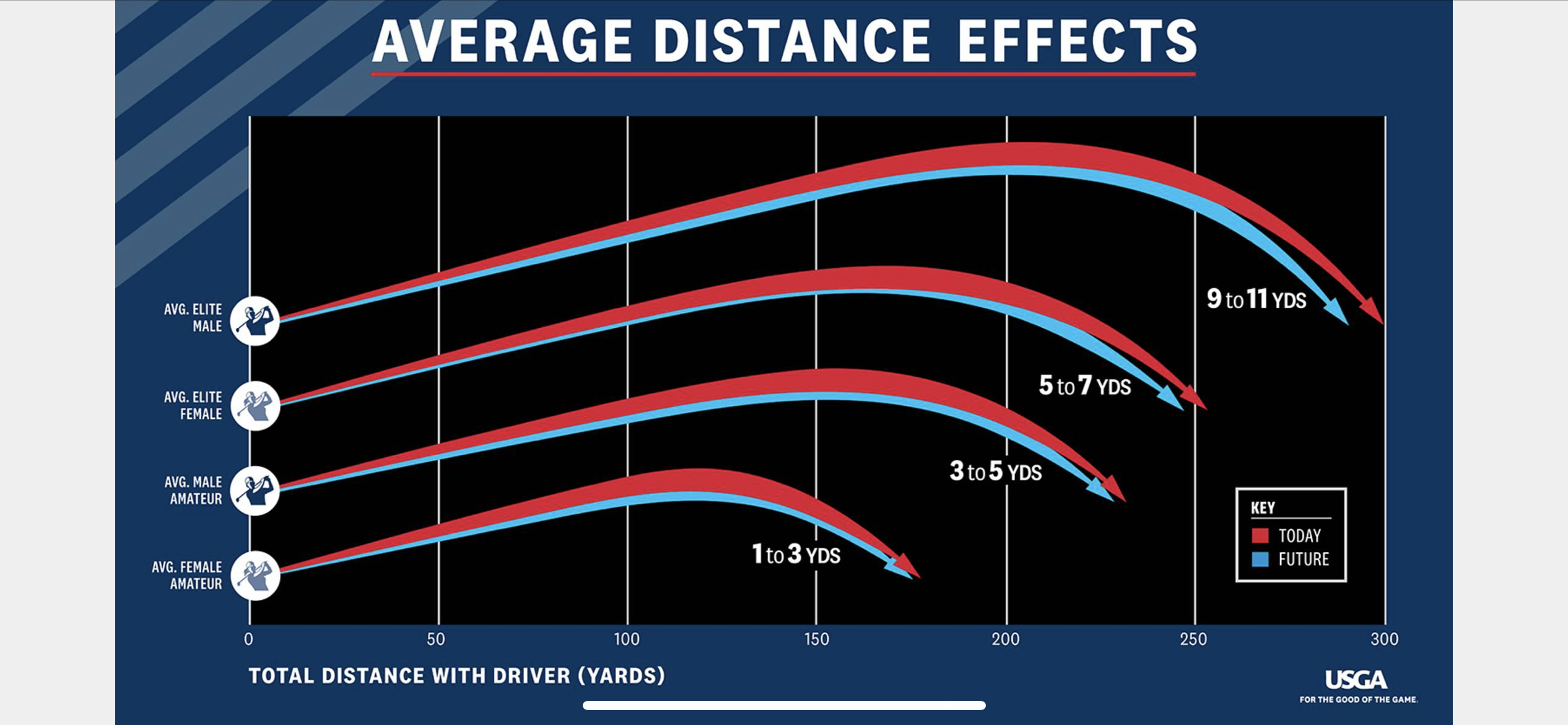
MORE ROLLING BACK TO COME?
The governing bodies also mentioned that they'll be looking into the forgiveness of drivers to ensure centre-strikes are rewarded.
The distance debate will surely continue over the coming decade, and it seems like drivers could be the next piece of equipment under the microscope.
The R&A and USGA say:
"In addition to the new ball-testing conditions, the governing bodies will:
- Expand the testing approach to better detect ‘Driver Creep,’ which can result in drivers exceeding the limits set out in the Equipment Rules. This is a change in the testing methodology for submitted drivers, to identify and proactively address driver models that are within current tolerance levels and have Characteristic Time (CT) values that are more likely to exceed the limit through regular use.
- Continue to monitor drivers and explore possible additional options related to distance. Specifically, we will research the forgiveness of drivers and how they perform with off-centre hits. This is an ongoing review and we will seek input from and continue to work with the industry, including manufacturers, to identify driver design features that can be regulated as a means to reward centre impact position hits versus mis-hits."
WHAT OUR EDITOR SAYS:
As I sit here on a sunny but very cold December afternoon, I can't help but think about those playing recreational golf today and how almost all of them could do with a few extra yards… That’s why my immediate reaction is disappointment.
Golf is hard, really hard. For millions of avid amateurs, upon whose shoulders the game is built, any rule that reduces distance (however small) will make the game harder. As we all think about ways to grow interest in our game, rolling back the distance of the ball feels counterproductive.
- Neil Tappin
RORY MCILROY SUPPORTS ROLLBACK:
"I think it will bring back some skills in the pro game that have been lost"
Rory McIlroy on the golf ball rollback: pic.twitter.com/3LGxUihQcnDecember 6, 2023
BRIDGESTONE GOLF STATEMENT:
"While we would prefer that any new rules did not impact recreational players, we believe further commentary is no longer productive."
Bridgestone Golf statement regarding USGA/R&A distance roll back announcement: pic.twitter.com/L290S6nJtXDecember 6, 2023
WHAT TITLEIST SAY:
“We do not believe this is in the best interests of the game. We don’t agree that there is a distance problem in the game. We do believe the game is thriving and hope to support the continued energy and enthusiasm around golf.”
LOTS OF STATEMENTS
We're unsurprisingly getting a lot of statements right now, from ball manufacturers to pro tours - many are against it, while some, like Bridgestone, simply say (and I'm paraphrasing here) that they don't really agree with it but know there's nothing they can do so will just get on with it.
LPGA STATEMENT:
The LPGA is appreciative of the leadership and stewardship of the USGA and The R&A on a variety of topics within the game, including today’s announcement regarding the anticipated changes to the rules governing distance. While we do not feel there is a distance issue in the women’s game, we recognize the need for the USGA and the R&A to address complex challenges and ensure the game’s continued long-term growth, success and sustainability.
We support the USGA and R&A’s decision to eliminate their previous proposal for implementation of a Model Local Rule related to the golf ball as we believe a unified approach to the game is important for the continued growth of women’s golf. Consistency across the game provides the best opportunity for the LPGA to showcase the enormous talent of our athletes and helps ensure the LPGA will continue to be a leader in elevating, inspiring, and advancing girls and women as we have been for more than 73 years.
We will continue to study the data the USGA and The R&A have shared and the effect these proposed changes will have on the women’s recreational, junior, amateur and professional game in 2028 and 2030; and we will continue to advocate for the advancement of the women’s game at every level.
SOMETHING INTERESTING FROM THE ANNOUNCEMENT
Around 30% of the golf balls tested by the governing bodies will still conform under the new testing procedures that will be coming in for 2028.
We suspect that means the softer, low compression balls but no more detail has been given.
Here's what the R&A and USGA said:
"A significant portion of golf ball models that are currently in the market – and more than 30 percent of all golf ball models submitted for conformance across the game – are expected to remain conforming after these changes are applied."
THOMAS BJORN'S TAKE:
The 2018 winning Ryder Cup captain is another who would have preferred a change to drivers.
Rolling back the ball…I would have preferred to see something done to the size of drivers. That would have benefitted the “strikers”.Anyway, ball it is.Let’s give @RandA and @USGA the benefit of doubt. They are the protectors of our game. Let’s see where it goes.December 6, 2023
BIG QUESTIONS AFTER THE ROLLBACK
Courtesy of our Deputy Editor Joel Tadman, here are 7 unanswerable questions after the rollback...
- Will the price of golf balls go up or down?
- How will the new ball actually perform?
- Will the major tours even adopt it?
- How will it effect the different players and clubs in the bag?
- How will conforming balls be denoted?
- Which current balls will continue to be conforming?
Read full article: 7 Unanswerable Questions After The Golf Ball Rollback News
COMPLAINING GOLFERS? GET LESSONS
Fried Egg Golf, a brand that shines the light on golf course design and is a strong supporter of the rollback, had this take for golfers who are against the rollback:
If every average golfer complaining about distance took 4 lessons instead of spending $600 on a new driver they probably would mitigate the distance lost by a rollback if not more.December 6, 2023
MCILROY'S VIEW
MY TAKE?
As a golfer of 20 years with a handicap of six, I am slightly divided on this news. I can completely see why the rollback is happening and do like the idea of us mere mortals playing the same equipment and under the same rules as professionals but I'm just not sure this is the right way of going about it.
Surely bifurcation is an inevitability with technology (both in clubs but also launch monitors) that the world's best players, who are incredible athletes, have access to.
For me personally, losing 7-10 yards isn't going to be a killer as I probably hit the ball around the 230-240 mark in the winter and anywhere between 260-300 in the summer when the fairways are firm. But in peak winter when it's really cold, into wind and no run, my drives probably barely go 210 yards. With a rolled back ball, that'll mean in certain conditions I can just about manage 200 yards. That makes my golf course very long for me, let alone 20+ handicappers or my dad for example, who is around 30-40 yards shorter than me off the tee.
It's going to make the game more difficult for a lot of players, and for me personally I would move up a tee block to the yellows during the winter. Is that a big deal? Not really, but making the game harder for recreational players who need all the distance they can get is a bold move from the governing bodies.
I will still love and play golf, though, just like 99.9% of us.
On the pro game, I do agree with Rory McIlroy that it should make things more entertaining, albeit I do just think they'll find ways around it as more youngsters with access to the best tech, coaches and personal trainers will still be bombing it 350.
MORE ON THE ACTUAL TESTING
Here's what the governing bodies say on how golf balls will be tested from 2028 vs today:
"The revised ball testing conditions will be as follows: 125-mph clubhead speed (equivalent to 183 mph ball speed); spin rate of 2220 rpm and launch angle of 11 degrees. The current conditions, which were established 20 years ago, are set at 120 mph (equivalent to 176 mph ball speed), 2520 rpm with a 10-degree launch angle."
GOLF MONTHLY'S FERGUS BISSET ON THE ROLLBACK:
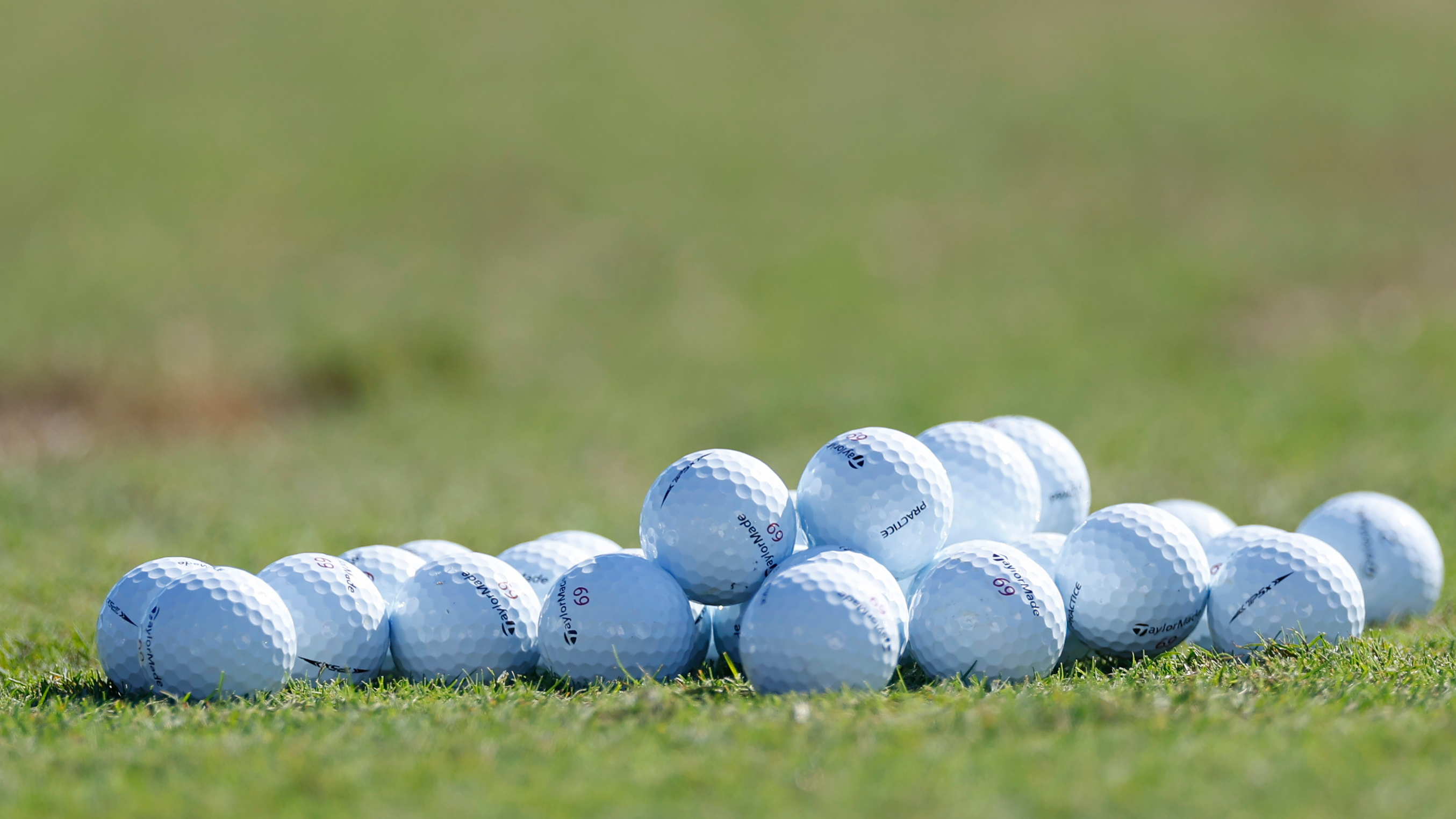
"I had my issues with that suggestion as I have never liked the idea of using a different ball to those playing in The Open Championship or at Augusta National. In my opinion – everyone in golf should play by the same rules. The manufacturers were, unsurprisingly, also not keen on bifurcation but, as far as I’m concerned looking at what has happened now, it would have been the lesser of two evils."
Read Fergus' full piece: Why Universal Golf Ball Rollback Is Like Using A Wrecking Ball To Crush An Ant
HOW FAR DO MALE GOLFERS CURRENTLY HIT THE BALL?
- 2022: 225.9 yards
- 2021: 224.3 yards
- 2020: 225.3 yards
- 2019: 224.4 yards
- 2018: 226.4 yards
Data from Arccos Golf shows that hitting distances in the amateur game have actually come down in the past five years. I wonder what they'll look like in 2030.
Read full article: How far do male golfers hit their drives?
MORE ON DRIVING DISTANCE ON THE AMATEUR GAME...WITH THE CURRENT BALL
Again, thanks to Arccos Golf for this thorough data (which is based on hundreds of millions of shots).
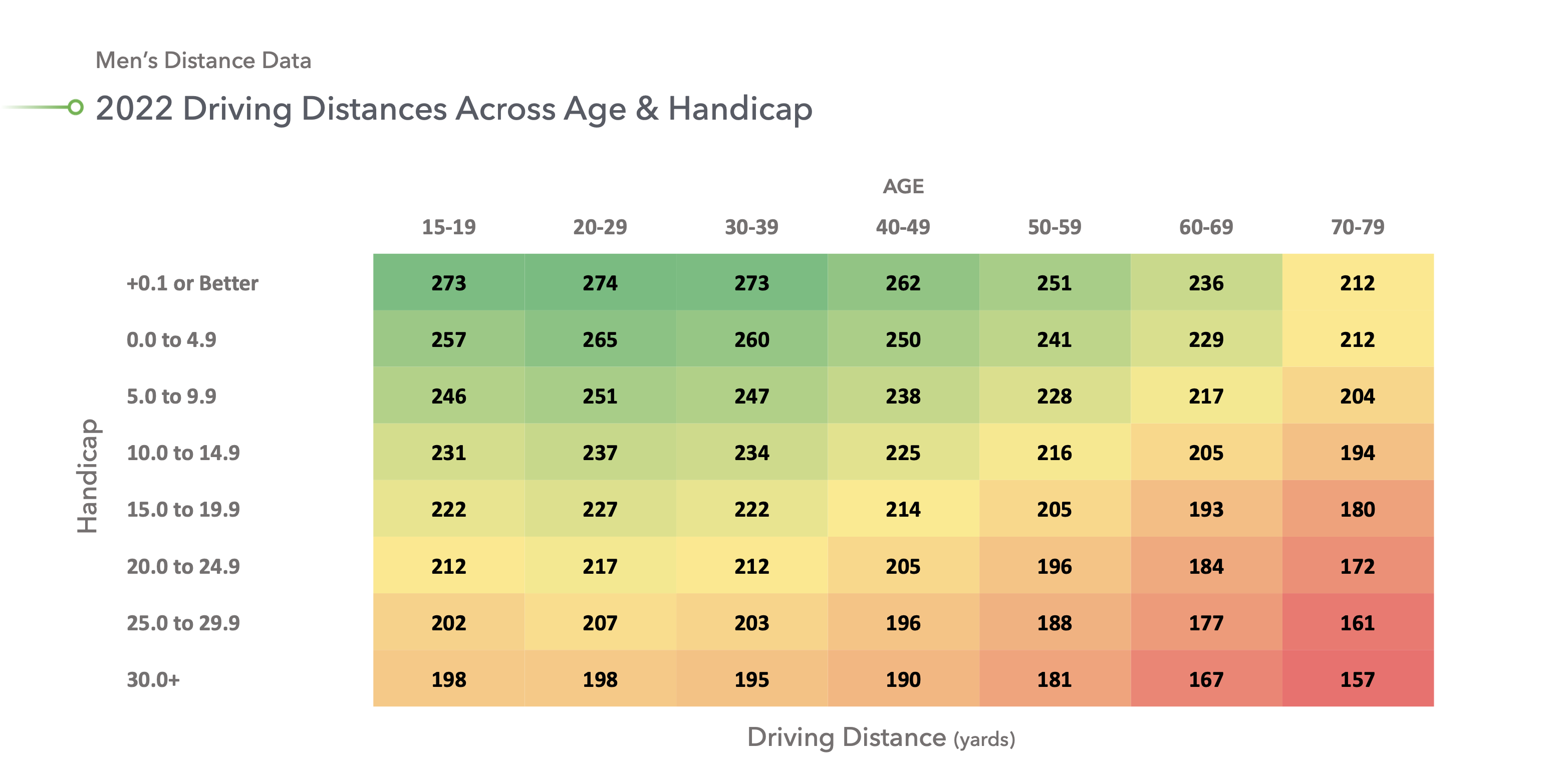
CALLAWAY STATEMENT:
It's a long one. The company says it would have preferred bifurcation but thanked the governing bodies for how they handled the process.
"Topgolf Callaway Brands respects the perspectives of the governing bodies and knows they are acting in what they believe is in the best interest of the game. However, when viewing the same data, we have consistently communicated that we would not have chosen to roll the ball back and we would have preferred bifurcation over a change across the board.
Having said that, we would like to thank and compliment the USGA and R&A for their approach and process in making this decision. Throughout this process, we believe they have been open and thorough in their analysis. They took the time to actively seek input from multiple stakeholders, including us, on multiple occasions and levels. They clearly listened and were thoughtful in their responses; and, when they deemed it appropriate, they modified their approach in ways that benefitted both the game and the industry that supports it. Along these lines, we appreciate the lead time the ruling bodies have provided to conform to the new rule. This will give us time to redesign and implement new products successfully. They also modified the testing protocols to avoid unnecessary testing ambiguity. Perhaps most importantly, they sought to minimize the impact on the end consumer by providing an adequate grace period for the transition in recreational golf. Certainly, all leading ball manufacturers, including Callaway Golf, will bear some added expense associated with redesign and tooling; however, there also likely will be new opportunities to differentiate which we look forward to.
Undoubtedly, there will be a lot of further conversation around this subject; particularly regarding whether this decision is good for the game and if all parties associated with the game will adopt the new regulations. In the end, we believe the game will be best served by us all aligning behind a common set of rules and standards. Therefore, while we will always participate actively in the debate; when a final decision is made, we will align behind it. The game at large has never been stronger and we look forward to being a major part of growing both on and off course golf moving forward."
HOW MUCH DISTANCE WILL BE LOST WHEN THE GOLF BALL ROLLBACK HAPPENS?
Here's what the governing bodies say:
The longest hitters are expected to see a reduction of as much as 13-15 yards in drive distance. Average professional tour and elite male players are expected to see a reduction of 9-11 yards, with a 5-7-yard reduction for an average LET or LPGA player.
The change in testing speed is expected to have a minimal distance impact, 5 yards or less, for most recreational golfers. Research shows an average swing speed of 93 mph for male golfers and 72 mph for female players.
WHAT'S TIGER WOODS' VIEW?
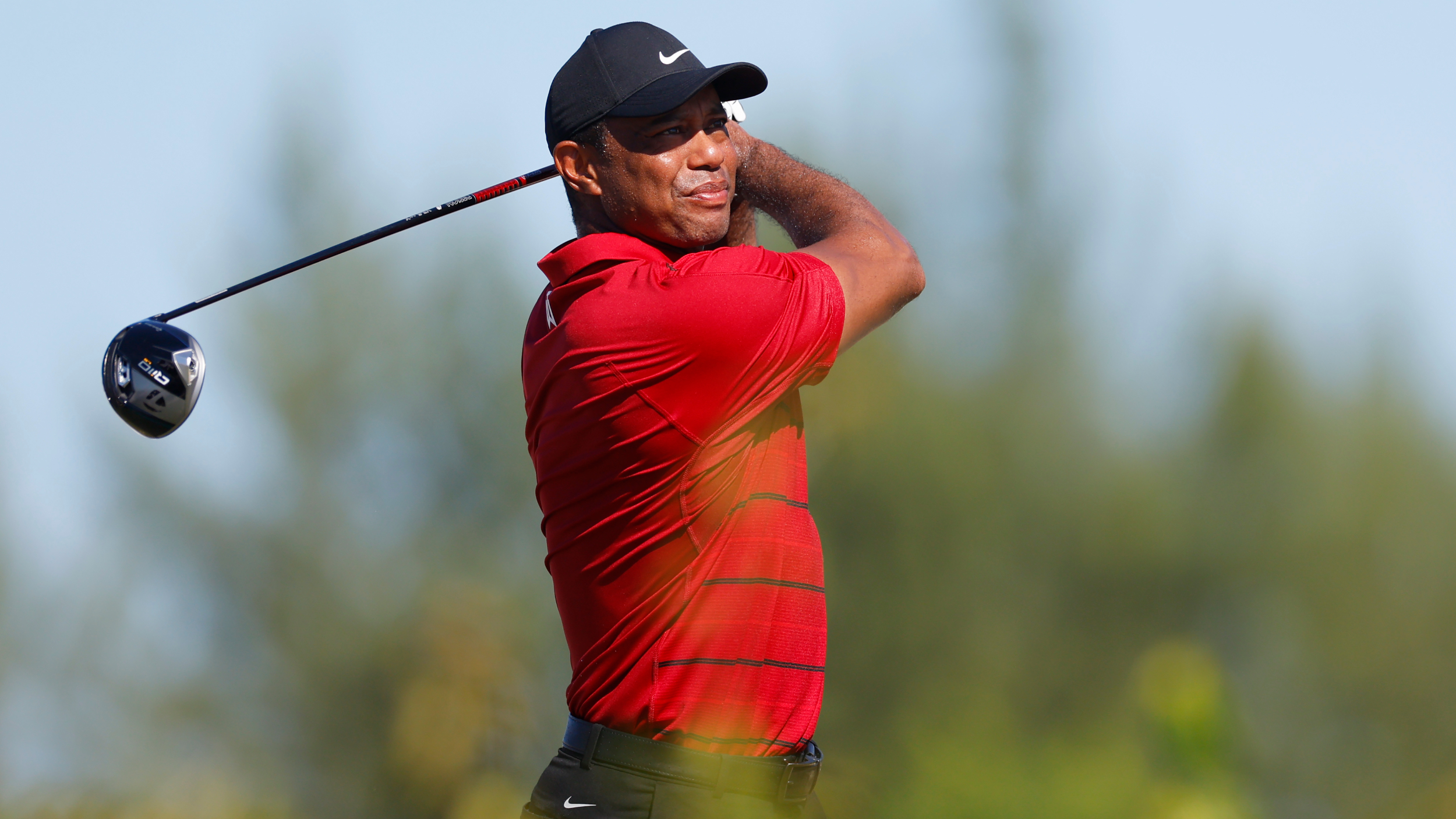
Tiger Woods and Rory McIlroy are two of the few big name PGA Tour players to have backed the rollback plans over the year since the original Model Local Rule (for bifurcation) was announced earlier in the year. Woods was keen on bifurcation but hasn't ever supported a rollback for amateurs, too.
Here's what Tiger Woods said about the rollback at the Hero World Challenge this weekend:
"This has been I guess the talk ever since I've been out on Tour. And then to finally see it come to this point where I think both governing bodies who control the rules around the world are going to come to a collaborative understanding of how far - we just doesn't have enough property anymore. So I think that understanding that yeah, we've been hammering the ball needs to slow down, but it has kept speeding up my entire time on career and here we are.
"As I told you guys, I've always been for bifurcation. I've always said that. Just like wood bats and metal bats.
"There's a lot of things I can't do that I used to be able to do with a golf ball. I used to be able to call upon any shape, any shot whenever you wanted and was able to contort myself to those shots. I can't do that anymore. As I said earlier, I've always been one that has been able to hit the ball in the middle of the face, so that's been good. I think I was saying to you guys yesterday that I'm hitting the ball further than I did when I first came out on Tour. I'm slower, but tech, I'm still able to hit the ball in the middle of the face so there's always an advantage to do that."
HOW HAS PGA TOUR DRIVING DISTANCE GROWN OVER THE YEARS?
The answer is quite a lot, and these will certainly be numbers that the governing bodies are aware of. In 1998, zero players averaged over 300 yards. In 2023, that number was 98.







